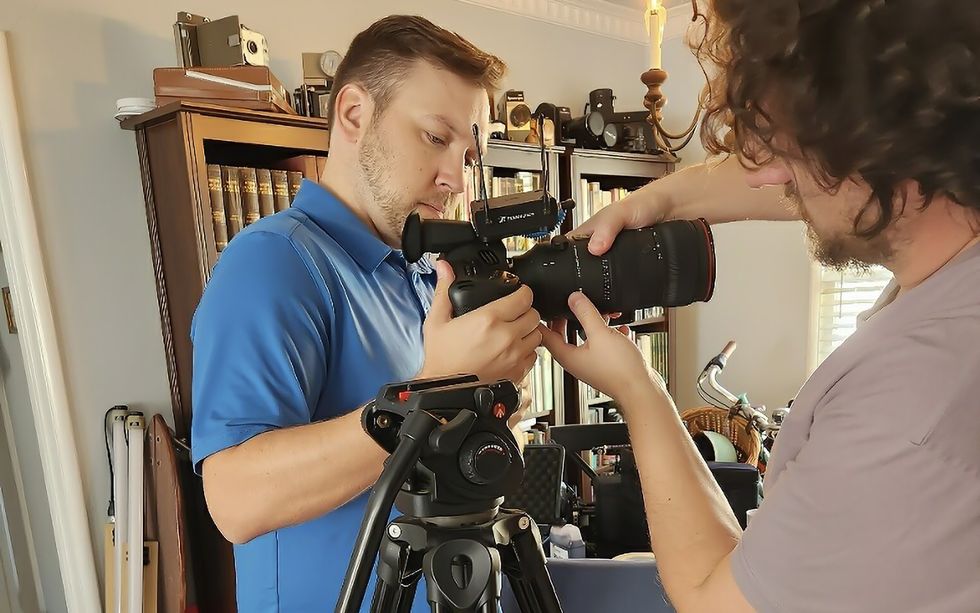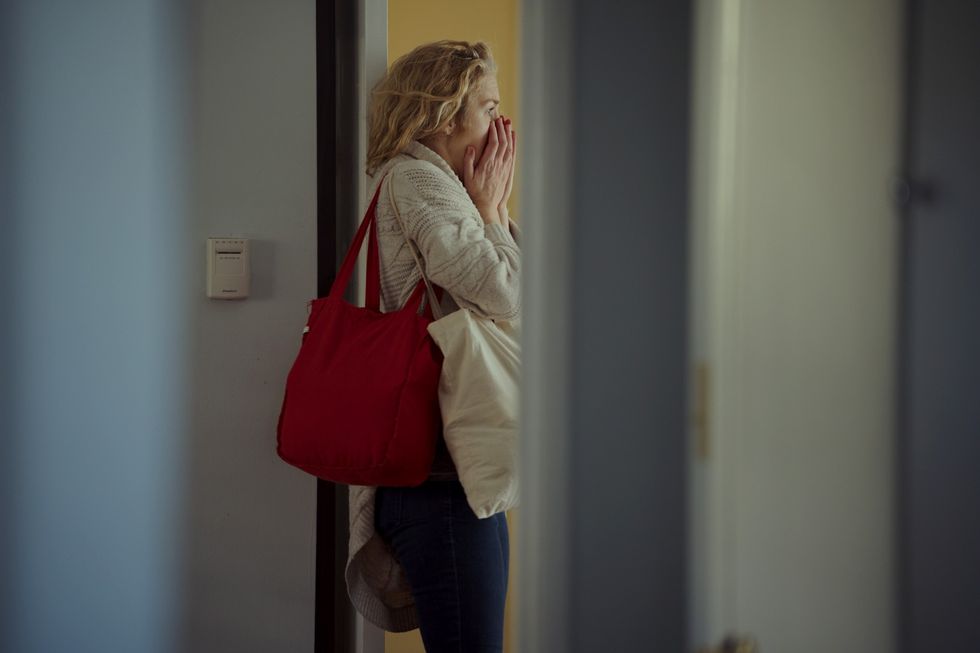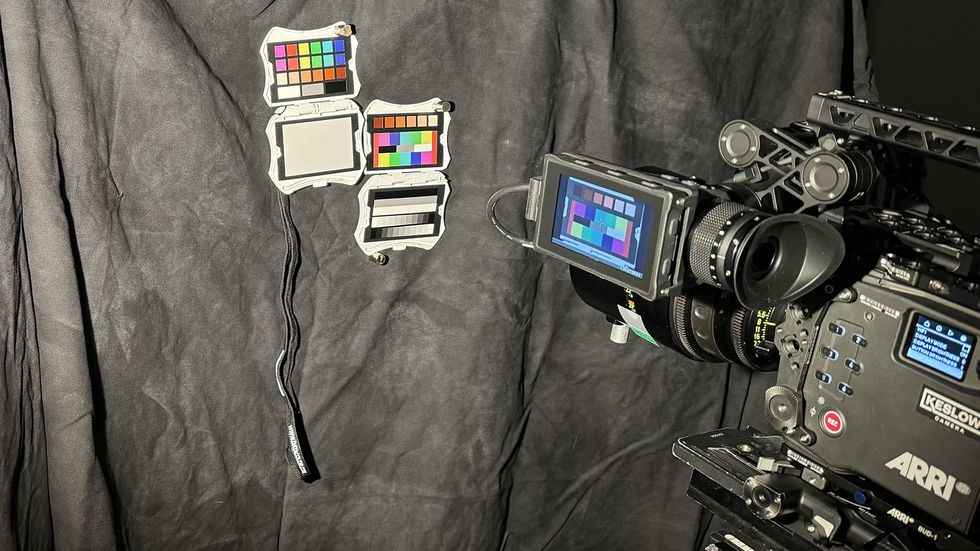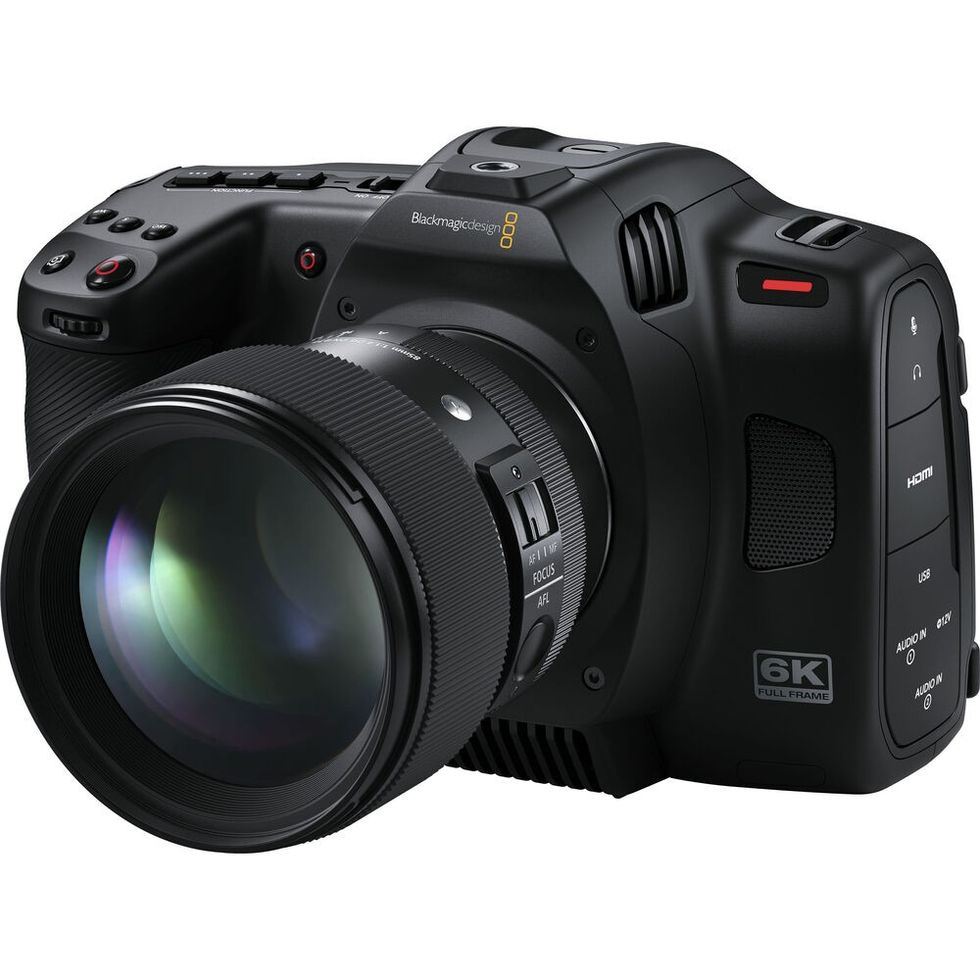
I’ve had the BMCC 6K for over a month now. Some days, I couldn’t get my hands off it, while other days it just sat on my desk. Then the day finally came where I could use this camera as it was meant to be used—I shot a short film.
I didn’t want to just capture some footage and go through the menus for this review. I wanted to see how this camera fared on a no-budget shoot and how it would handle everything we threw at it.
The short is in the can, but it’s taken me a few days now to try and understand where the BMCC 6K lands in the current camera landscape. Sure, it’s affordable and captures a great image, but there are other cameras out there, like the Sony FX30 and Fujifilm X-H2s to name a few, that are just as affordable and offer amazing image quality.
While working on an unrelated review, I had the chance to use the ARRI Alexa 35, and I finally realized why, despite the BMCC 6K not being as feature-rich, it’s a perfect tool for a filmmaker.
Here’s what I discovered during my time with the BMCC 6K and why I think it should find a home in your toolkit regardless of the work you do.
The BMCC 6K—Coming Full Circle

When Blackmagic Design first released a camera, it brought the Blackmagic Cinema Camera 2.5K to market. It had an unconventional form factor, sparse features, and an image quality unmatched by other cameras in its price range.
That was back in September 2012.
Eleven years later, the BMCC 6K brought the original concept into a new resolution, new sensor size, codec, and form factor. It felt like holding the original BMCC but with a lot more imagery and battery life.

The new BMCC uses the BMPCC 6K Pro body and allows you to use all the Pro accessories, like the Pocket EVF and battery grip. It gets rid of the internal ND filters and swaps them out for an L-Mount and a full frame 36mm x 24mm sensor with an OLPF filter.
It’s a simple tool. But sometimes, that’s all we need, right?
Much like the original camera that first launched BMD into the camera space, the BMCC 6K feels like it remains unchanged. At least conceptually. It still has the unconventional form factor, sparse features, and unmatched image quality when compared to other cameras in its price range.

There’s no autofocus (kinda), no IBIS (also, kinda), no ND filters, no built-in Frame.io integration, and no power out for industry-standard accessories. Trying to figure out how to add a V-mount battery, a follow focus unit, a monitor, and wireless video is already giving me a headache.
Sure, BMCC 6K can use autofocus lenses, but it wasn’t something we were able to reliably use with the Sigma lenses on our shoot. And while IBIS is missing from the camera, the built-in gyro does enough heavy lifting to nudge your footage into stability.
But I think this camera thrives on running around butt-naked. This is what using the ARRI Alexa 35 made me realize. But more on that later.
The BMCC 6K On Set

In order for me to really understand the BMCC 6K, I wanted nothing more than to shoot a short film with it. So that’s exactly what I did. I went back to my roots of shooting with just a camera and an actor. One actor, one light, no crew (save for a DP), and no permits (sorry FilmLA).
It was liberating, although a bit frustrating, as we constantly battled the sun and creative obstacles. But once we wrapped, I felt a high I hadn’t felt in years.
The camera rig was simple. We didn’t have one. The BMCC 6K had a battery grip with two extra NP-F570 batteries, the EVF, and a small magnetic cheese plate to hold the audio receiver. That’s it.
For lenses, we used three Sigma zooms in L-Mount—the 14-24mm F2.8 DG DN Art, the 24-70mm F2.8 DG DN Art, and the new 70-200mm F2.8 DG DN Sports. We’ll have a review of the 70-200mm coming up soon.

But with three lenses, a stripped-down camera, and three people (me, a DP, and an actor), we knocked out a five-page short in three days. While we could have done it in two, the December sun moved fast, and we quickly lost light in our interior location, which forced us to tack on an extra day.
And we shot fast. The BMCC 6K powered in seconds, the menu was stupidly easy to navigate, and switching to playback on the rear LCD panel was super quick. This allowed me to make quick adjustments to performance or framing. The EVF was also an awesome addition. It provided stability for the camera when pressed up against my eye and gave me an amazing preview of the composition.

Our first day included all of our exteriors and we shot nonstop for four hours. With some minor power management, the camera lasted on three batteries without any issues.
When we finally moved indoors, we threw any power management out the window, and this is where the three batteries began to falter. Toward the end of our day, we were plugging into wall power to keep the shoot moving.

If this camera becomes part of your kit, having an extra pair (or two) of NP-F570 batteries to swap into the battery grip is a must. But this doesn’t mean you need the battery grip. However, if you opt out of the accessory, you will be swapping out batteries more often.
The EVF, on the other hand, is a must, in my opinion. It gives you a clear view of your composition and another point of contact to stabilize the camera.
The BMCC 6K is also super light and compact. While the form factor is a little strange if you’re trying to rig out a cage with a bunch of accessories, holding it in hand or just having it on a tripod makes handling and setup effortless.
The Full-Frame Sensor

For me, one of the most impressive things about the BMCC 6K was the full-frame sensor. I’m a filmmaker who usually lives in Super 16 and Super 35, so shooting Open Gate in a 6048 x 4032 resolution on a 36mm x 24mm sensor was like diving into a completely different world.
The sensor gave my image depth even when shooting at f/8, and the 3:2 aspect ratio felt hefty. I’d really love to use this camera with a 2X anamorphic lens to really allow this sensor to run wild.
When it came to rolling shutter, it was almost imperceptible, even in the handheld shots. Sure, if we whipped the camera from left to right, you could see it, but in a narrative setting, the rolling shutter “issue” is a non-starter.
If we do see perceptible rolling shutter in the edit, we can always use the internal gyro to remove it. For those creatives who are shooting tense action with crazy camera moves, you may want to run a few tests with the above technique to see if it’ll be a good fit.

Here’s the one issue I have with the full-frame sensor, and it’s more of a difficulty than an issue. Your focus will be razor-thin at anything below f/4. Even at f/5.6, getting perfect focus is challenging.
The focus assist features on the BMCC 6K are good, but when dealing with a thin focus area, you’ll still miss the mark on occasion, especially when you’re handheld.
BRAW Defines the Edit

While the short film is still early in post, initial color grade tests have been impressive. I’ve worked with BRAW before, but this is the first time I’ve had the opportunity to record my own footage with my own look, lighting, and composition.
The footage holds up to everything I throw at it. Even with a Color Space Transform modifier and heavy film emulation, the footage still feels like I could push it further. Add in Resolve’s Highlight Recovery (which feels like witchcraft), and as long as I’m within 2 or 3 stops of being properly exposed, the footage looks brilliant.

BRAW makes me feel more comfortable about making exposure mistakes.
Now, I know I can achieve this same look from other cameras, like the above-mentioned Sony and Fujifilm cameras, but BRAW has always felt like clay in my hands, whereas other codecs felt more like building blocks.
For those who live and die on the hill of color science, there’s enough “room” in BRAW to match your look to whatever you want. It’s hard for me to say that one camera’s color science is better or inferior to another’s when I can make small adjustments in post and have the difference be non-existent.

Having said that, the Rec.709 conversion of BMD camera footage has always felt a bit milky to me. It’s warm and pleasing but lacks the punchy look I crave in my footage. But that’s what makes BRAW and the BMCC 6K so wonderful to use. I pop in my own custom display LUT, preview the footage on camera with the look I want, and then do final edits in DaVinci Resolve.
The image versatility is there. And for $2,595, I feel like I’m robbing Grant Petty.
Is BMCC 6K a Camera for You?

The Alexa 35 I used for our upcoming review was heavy, even with a simple cage and lens combo. The menu system was easy enough to navigate, but only when I realized the UI was made by Germans. And there was enough I/O on it to power every accessory at Keslow Camera.
It’s a camera that defines the meaning of “cinema camera.” We measure every other tool to the Alexa.
Yet, I felt like I needed a team to properly use it to its full potential. It wasn’t a tool I could just pull out of my kit and capture gorgeous imagery all day. Not unless I had the muscles of a bodybuilder and the permits.
The BMCC 6K was nothing like the Alexa 35, which feels like a silly statement to make. I could immediately turn it on, shoot without arousing suspicion, and capture footage that I could effortlessly match to the Alexa 35, all without breaking a sweat.
It’s the simplicity of this camera that drives me to use it.
Blackmagic Design Cinema Camera 6K

Blackmagic Design brings next-gen digital film capture to the masses with its new Cinema Camera 6K. Based around a full-frame 6K sensor and an active Leica L lens mount, this high-end camera features rich colors, accurate skin tones and a wide 13-stop dynamic range.
For budget creatives, the BMCC 6K is an affordable A Cam that captures impressive footage. It allows you the freedom to make mistakes and properly train your eye for composition. The full-frame 36mm x 24mm sensor is also gorgeous, even if it is difficult to focus.
For veterans or industry titans, it’s a companion tool that can do things bigger cameras just can’t. Try taking an Alexa into a theme park, onto public transportation, or to a store and capture some footage. I’ll see you in 30 seconds when you get kicked out. Or try using an Alexa in a small space like an elevator or car. You’ll wish it were half the size and half the weight.
Whether you’re shooting a music video, documentary, narrative, or even corporate work, having a BMCC 6K in your kit as a B Cam or C Cam will be a lifesaver. And when you’re on your own, it may just be the camera you reach for most often.
This is why the BMCC 6K isn’t a camera for filmmakers but a camera for a filmmaker.
Author: Yaroslav Altunin
This article comes from No Film School and can be read on the original site.
